Features
Her Name Is Barbra
Barbra Streisand Albums Ranked (Best And Worst)
by Peter Piatkowski
Barbra Streisand’s long-awaited autobiography is going to be released next month. Fans of Streisand have been waiting for her book for decades. In the 1980s, Jacqueline Kennedy Onassis, editor at Doubleday, tried to use her celebrity to get Streisand to pen her memoirs, but the diva demurred, waiting for decades before releasing her story, My Name Is Barbra.
A gay icon and showbiz legend for over 60 years, Barbra Streisand is a brilliant singer and a peerless interpreter of the Great American Songbook; she also was one of the biggest pop stars of the 1970s, establishing herself as the premier pop balladeer. Starting from the 1960s, she navigated considerable shifts in popular music, and at times tried to change and adapt, recording several disco hits in the 1970s and venturing into A/C pop in the 1980s and 1990s, but she never left Broadway, Tin Pan Alley, or the Great American Songbook.
Starting with her debut album, 1963’s The Barbra Streisand Album, the singer created a deep discography of records that positioned her as an entertainment superwoman. Possessing an uncommonly beautiful and powerful voice, Streisand stood in great contrast to her peers, avoiding the rock of the 1960s in favor of supper-club pop, showtunes, cabaret, and standards. Despite her youth, from the beginning she demonstrated an innate feel for an ability to interpret pre-rock pop.
Though she was an incredible vocalist from the very beginning of her career, Streisand’s real ambition was to conquer film. She made a splashy film debut in 1968’s Funny Girl, winning an Oscar, becoming a versatile and commanding comedienne, and dominated the 1970s with a string of hit films like The Owl And The Pussycat (1970), What's Up, Doc? (1972), The Way We Were (1973), and A Star Is Born (1976). In 1983 she fulfilled another dream, directing the musical drama Yentl.
As her film career blossomed and her celebrity grew, music became an afterthought. She has repeatedly admitted in interviews that singing is her least favorite talent, preferring directing and acting (she also has legendary stage fright). In the 1980s she slowed down her recording schedule considerably, and in that loud, confused era, she seemed for a time to have lost her way.
Over the past few decades, Streisand has found her muse. She started touring regularly and recording again, releasing albums that would extend her reign on the Billboard charts (she’s logged 11 number-one albums, and is one of the few artists to have scored a number one album in every decade since the 1960s). Below is a ranking of 15 of her best releases (as well as five albums to avoid). She has recorded over 35 albums, including studio releases, soundtracks, and live albums), so there is a lot to go through—these 15 are Streisand at her best.
[Editor’s Note: Astute readers may notice that this rankings column violates at least two of our rules for them (no live albums / no compilations) and skirts another (presenting the Funny Girl cast album as a Streisand album doesn’t do justice to her co-stars). On the other hand: it’s Babs. Sue us.]
The Best:
15. Walls (2018)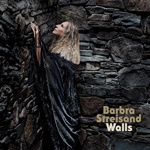
Streisand's liberal politics have become as integral to her image as her music and films, but she rarely recorded protest material or socially conscious songs. The 2016 presidential election pushed her to respond by putting together a pop record that spoke to the politically fraught place America had become. "Don't Lie To Me" was her most explicitly political song, which she co-wrote. Other issues of immigration, gay rights, and feminism are addressed on Walls; along with original material, Streisand also hand-picked some covers, including John Lennon’s “Imagine” and Burt Bacharach’s “What The World Needs Now” and she goes back to her own catalog, to re-record "Happy Days Are Here Again," casting the tune as a hopeful, maybe desperate, anthem.
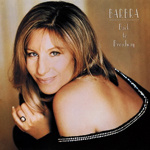 14. Back To Broadway (1993)
14. Back To Broadway (1993)
Sequels are hardly ever as good as the original, and 1985’s classic The Broadway Album set a high bar that Streisand never matched. But her return to the Great White Way was a welcome and triumphant homecoming. Her still-magnificent pipes were the perfect vehicle for these Broadway showtunes from legendary composers like Rodgers & Hammerstein, Sondheim, Bernstein, and the Gershwins. Her interpretations of Andrew Lloyd Webber’s Sunset Boulevard are passionate and intense (suggesting that she should have been approached to play Norma Desmond in the show's many revivals). Sondheim, a personal favorite of hers, dominates, and she does a beautiful job, particularly dueting with Johnny Mathis on a medley of ballads from West Side Story.
13. Love Is the Answer (2009)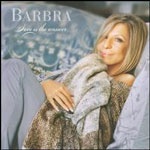
Though she recorded several jazz classics and jazz standards, Barbra Streisand was never really a jazz singer. She is far too mannered and calculated a singer to engage with a genre as playful and spontaneous as jazz. But ever the consummate actress, she does a damn fine job of impersonating a jazz singer. So even if her scatting and runs sound too exact and studied (as opposed to the explosion of joy from Ella Fitzgerald), she sounds great singing. By 2009, Streisand’s voice had aged slightly, adding a bit of husk and grit, but she had remarkable power and range, and her interpreting skills were undimmed. Working with jazz great Diana Krall, Streisand recorded 13 fabulous tunes. Her efforts paid off when she was rewarded with her record-breaking ninth number-one album in the US and the UK.
 12. Guilty (1980)
12. Guilty (1980)
In the 1970s, both the Bee Gees and Barbra Streisand seemed unstoppable. The Brothers Gibb were genius songwriters and producers, crafting perfect pop tunes, scoring the musical landscape with their compositions. Their fame reached an astounding peak with the soundtrack to the 1977 musical film Saturday Night Fever. As disco waned, the Gibbs maintained their superstardom, branching out into songwriting and producing. One of their most fruitful collaborations was with Barbra Streisand on their 1980 album Guilty. Though Streisand succeeded in performing contemporary pop after a decade of singing standards, Guilty was the most consistent and thoughtful way for the singer to jump on a pop trend and do so gracefully. The Gibbs create a bleached-white, yacht-rock environment for Streisand’s buttery belt. Barry Gibb joins Streisand on a pair of monster hits, including the shuffling title track. The reason Guilty worked is simple: neither the Bee Gees nor Streisand are cool, and they were making pop music aimed at pop radio, but unconcerned with being too hip or innovative.
11. A Star Is Born (1976)
When Streisand came to the public consciousness in the early 1960s, she was immediately crowned a showbiz pop queen and was compared with icon Judy Garland. Both singers possessed gigantic voices, a penchant for pop standards, and dedicated (maybe obsessed?) gay male fan bases. Where Streisand differed is that she replaced Garland's vulnerability with a steely defiance. Streisand’s embrace of Garland’s legacy reached a high with her take on the classic showbiz tale, A Star Is Born. Setting the story in the world of rock and roll, Streisand costars with Kris Kristofferson, and the two stars released this smash hit album. Streisand’s version of rock is far more camp and square than real rock, but she performs the material here with aplomb. Streisand would win her second Oscar for writing the wedding dance standard “Evergreen,” and the album and the film would become two of her most significant career victories.
 10. Stoney End (1971)
10. Stoney End (1971)
Streisand entered the 1970s and embraced contemporary rock/pop with her 12th studio album, Stoney End. The title tune was a spirited cover of Laura Nyro (Streisand's knack for mimicry meant she could echo Nyro’s soulful wail) and proved that when handed the suitable material, she could pop and rock with the best of them. The rest of the record covers other singer-songwriter heavyweights like Randy Newman, Joni Mitchell, Harry Nilsson, Gordon Lightfoot, and Carole King, as well as several more Nyro tunes. Richard Perry worked with Streisand, bringing her to 1970s California soft rock, and did a brilliant job.
9. Barbra: The Concert (1994)
Though Streisand’s stage fright was nearly as iconic as her brassy voice, she logged another triumph in her career in 1993 when she embarked on an 18-show tour to support Back To Broadway. The concert became a headline-grabbing success and was a critical and commercial smash. The tour was captured by this double album and a concert film. The Concert is not only a fantastic encapsulation of Streisand’s career, but it’s also a testament to her considerable showmanship and those practically perfect pipes. The show is arranged and conducted by Streisand’s close pal, the late/great Marvin Hamlisch, and she’s backed by a full orchestra that brings her songs to life. There are no real surprises on the album—she stays away from her trendier material, content to performing the standards and her pop ballad hits. As a lovely little gift to her audiences, The Concert also includes a new track, “Ordinary Miracles,” a gooey love ballad that is the umpteenth collaboration between Streisand and the legendary songwriting duo Alan and Marilyn Bergman.
 8. My Name Is Barbra (1965)
8. My Name Is Barbra (1965)
The soundtrack to her first television variety special, My Name Is Barbra, is a comprehensive snapshot of early Streisand’s great talents. There are funny novelty numbers, torch songs, and pop ballads. There’s a loose concept that follows the TV show about childhood, with Streisand singing songs like “Jenny Rebecca,” “I’m Five,” and “I’ve Got No Strings” (from the Disney film Pinocchio). She sings these songs with her almost-Borscht Belt style of comedic singing and shows off a fabulous flair for comedy songs. As expected, she performs classic pieces like the Gershwins’ “Someone To Watch Over Me” and the Fanny Brice classic “My Man” with a maturity and skill that belies her youth. More than just an album, it’s a glimpse of the stratospheric rise of Streisand’s star.
7. Live At The Bon Soir (2022) 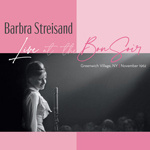
Recorded live at the Lion and the Bon Soir in Greenwich Village in Streisand’s native New York, Live At The Bon Soir was supposed to be Streisand’s debut album. Capturing her performances in 1962, the album chronicled Streisand’s revered tenure at the nightclub. Those performances contributed to the mystique and allure of Streisand’s legend. In the early 1960s, Streisand hadn’t yet become a massive superstar (with all of fame’s trappings), and she was a comfortable and engaging live entertainer. She was a gregarious performer, playing with the audience and taking them on a journey of story and song. There are elements of cabaret, Broadway, and the music hall in Streisand’s act. The repertoire is comprised of pop standards, jazz, and pre-rock pop. She also integrates some comedy songs, showing off not just her vocal range but the wide range of her interpretive skills. These performances—as well as her debut album—show that she was a revelatory musical talent and a true original.
 6. People (1964)
6. People (1964)
After her boffo debut in 1963, Streisand followed up with a couple of solid albums that were essentially retreads of the first album but a definite case of diminishing returns. Her fourth album, People, was a roaring return to form. Building on the brilliance of the first two albums, Streisand wisely mixes up the track listing on the record with several recognizable pop tunes, obscure tunes, and some novelty songs. Before she took herself so seriously and chased Hollywood glamour, Streisand was gloriously weird and quirky, and People embraces that oddness. Her voice is pure and perfect, yet she still has that unmistakable Brooklyn drawl. The album’s centerpiece is the title song—from Funny Girl—which would become Streisand’s signature song. But People is filled with excellent compositions, including her longing “Will He Like Me?” and the clever “When in Rome (I Do As The Romans Do).”
5. A Christmas Album (1967)
Trust Streisand to create one of the greatest, most essential holiday albums ever. The album combines hymns, Christmas carols, and some secular material. Streisand applies her gorgeous, voluptuous voice and makes these songs—which have all been recorded a million times—her own. As with most of her 1960s records, there are strange quirks and oddities to make the album special and innovative. For example, listen to her zigzagging “Jingle Bells,” which races at a supersonic speed as if that one-horse open sleigh is hurtling down a snowy hill. Her jazzy, showy “My Favorite Things” from The Sound Of Music is elegant and brassy, and despite being very familiar, songs like “Have Yourself A Merry Little Christmas,” “White Christmas,” and “The Christmas Song (Chestnuts Roasting on an Open Fire)” sound fresh in her hands. The record’s most moving moments are the austere, reverent performances of stirring hymns like “The Lord’s Prayer,” “Ave Maria,” and a particularly affecting “Silent Night.”
 4. Funny Girl (1964)
4. Funny Girl (1964)
This album, more than others, would define Streisand’s artistry, fame, and legend of the 1960s. This soundtrack to her Broadway smash contains some of the singer’s most indelible moments on vinyl. She’s given a chance to show off her full range of talents and emotions: there are tear-jerkers, knee-slappers, and the kind of rousing numbers that bring people to their feet. “I’m The Greatest Star” is the audition to end all auditions, and Streisand brings all her comedic skills to the nifty tune. “People” is the heart-breaking ballad that would become her anthem. And “Don’t Rain On My Parade” is the defiant, inspirational finish, and Streisand sings the hell out of it.
3. Barbra Streisand's Greatest Hits Volume 2 (1978)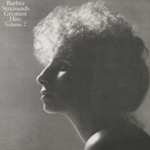
A greatest hits album that collects all of Streisand’s 1970s-era ballads, this record is more than just a chronicle of her chart smashes. It’s the record that would set the template for diva pop: singers like Whitney Houston, Celine Dion, Mariah Carey, Toni Braxton, and Vanessa Williams all would owe a great debt of gratitude to this album. It marries the roots of contemporary pop balladry—post-war Brill Building, Tin Pan Alley—with the sounds of Broadway (stirring lyrics, emotional arrangements, bombastic vocalizations) and establishes a style of sentimental songwriting and singing that would become its own genre. It’s a tight, concise album—topping out at 10 tracks—however, it’s a stunning achievement and a testament to the reach and impact these singles had on female singers of Streisand’s generation and those that followed.
 2. The Broadway Album (1985)
2. The Broadway Album (1985)
When Barbra Streisand appeared at the 70th annual Tonys broadcast, the audience rose to its feet, giving her a standing ovation. It was her first appearance in nearly 50 years. For a singer so tied to Broadway, her actual link to theatre is relatively brief. She appeared in a handful of theatre productions, two major Broadway productions—I Can Get It For You Wholesale and Funny Girl—and a run of Funny Girl on London’s West End. But on vinyl, Streisand kept up the illusion that she was a Broadway baby, recording showtunes throughout her whole career, usually sprinkling a smattering of theatre music in her pop albums. Still, when she devoted an entire LP to Broadway music, it was seen as a significant moment in pop. Her 1985 album would become one of her greatest successes—both commercial and critical (and it would win her—to date—last competitive Grammy). The Broadway Album takes some gems from musical theatre and reimagines them in a pop context. Her vocal performances on these tunes—with a big emphasis on Stephen Sondheim—are astounding, arguably some of her best. She used all of her skills as an actress and comedienne to perform these songs, which are mini-stories.
1. The Barbra Streisand Album (1963)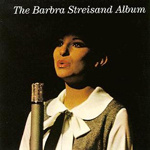
One of the greatest introductions in pop music history, The Barbra Streisand Album is a brilliant essay of her incredibly idiosyncratic talents. She was a phenomenal singer who was able to breathe life and originality into songs written for artists generations older. Though a child of the counterculture movement, she was a bridge between pre-rock pop and the rock revolution. She was a weird, odd kook who applied that strange individuality to her singing of the Great American Songbook. Her voice was a powerful, nearly operatic force of nature. She had a timbre and tune that should have been at odds with how young she was. Along with popular classics like “Cry Me A River” and “A Sleepin’ Bee,” she also took on some more esoteric, obscure material, including theater songs, jazz standards, and children’s music. The best part of The Barbra Streisand Album is that we hear Streisand early in her career before she got bogged down with being a perfectionist pop diva: she’s powerful, raw, and cheeky.
The Worst:
5. A Love Like Ours (1999)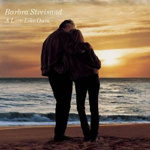
After falling in love with actor James Brolin, Streisand was inspired to record an album of sappy love songs celebrating their nuptials. On one of her worst efforts, Streisand’s talents are buried underneath layers of schmaltz and cheap sentiment.
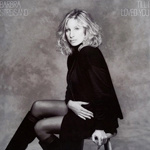 4. Till I Loved You (1988)
4. Till I Loved You (1988)
Streisand chose this dull, bloated effort to follow up her Broadway album success. Till I Loved You is a semi-concept album that charts a love affair from start to end. It’s a typical ’80s superstar affair with high-name guests (Quincy Jones, Luther Vandross, Dionne Warwick, James Ingram and Jennifer Holliday, among others) and a variety of tunes penned by some pop radio’s biggest songwriters (Bacharach, Maury Yeston, Glen Ballard, Clif Magness, the Bergmans). The result is an oddly soulless, bland affair squandering Streisand’s talents. The worst track is the dull love duet between Streisand and her then-beau, TV star Don Johnson, who was enjoying a fledgling career as a pop singer.
3. Emotion (1984)
After ruling the pop charts in the 1970s, Streisand entered the ’80s with the massive hit Guilty. Perhaps emboldened by that success, she hoped this album would maintain that popularity. She was wrong. This ill-advised venture into MTV-style ’80s pop was disappointing and only sold to her core fans. It’s a messy affair, with a patchwork production style, with Streisand sounding lost among the drum machines, synthesizers, and electric guitars.
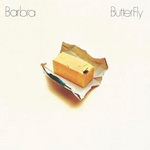 2. ButterFly (1974)
2. ButterFly (1974)
At her commercial peak, when she could do no wrong, Streisand hired her boyfriend Jon Peters to produce her follow-up to The Way We Were. The result? One of the singer’s worst albums. ButterFly has Streisand do some of the worst singing in her career, including some very awkward shrieking on gospel, reggae, and soul tunes. Her totally inept handling of Bob Marley’s “Guava Jelly” is ridiculous, and she never should have tried to take on Bill Withers’ “Grandma’s Hands.” Her cover of Bowie’s "Life On Mars" is criminal. Peters’ career as a music pro was thankfully short-lived as he moved on to film, becoming one of the most successful film producers in the game. ButterFly is an embarrassment for both.
1. What About Today (1969)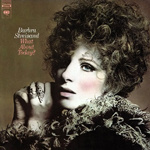
Streisand's worst album is her first attempt at leaving behind the Great American Songbook for current pop/rock. Instead of looking to Gershwin or Porter, she turns to peers like Lennon and McCartney, Paul Simon, Jimmy Webb, and Buffy Sainte-Marie. Produced by Wally Gold, What About Today shows the yawning gap between Streisand’s interpretive skills and pop/rock songwriting. She shows no aptitude or affinity for the work of John Lennon and Paul McCartney, butchering “With A Little Help From My Friends” and “Goodnight.” She’s also miscast singing on the Simon & Garfunkel tune “Punky’s Dilemma.” The whole exercise seems unnecessary and baffling.